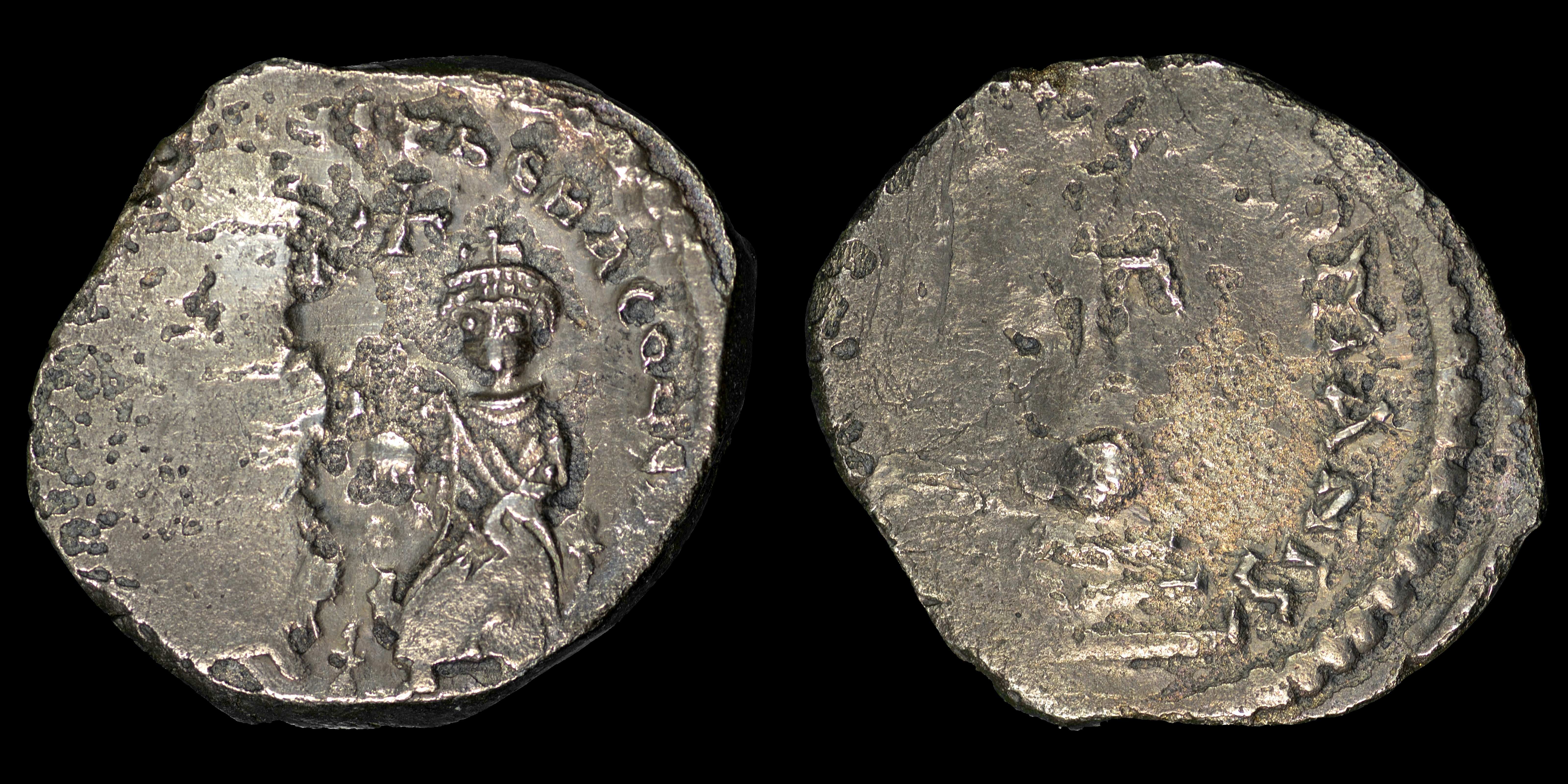The hexagram was a large silver coin of the Byzantine Empire issued primarily during the 7th century AD. They were named after their weight of six grammata (6.84 grams), and probably valued at 12 to the gold solidus.
It was first struck by Heraclius, and uniquely carried the inscription of Deus adiuta Romanis or "May God help the Romans"; It is believed that this shows the desperation of the empire at this time.
The coin remained in regular issue under Heraclius's successor Constans II, from whose reign many specimens survive, but becomes rarer for Constantine IV, and thereafter seems to have been only occasionally minted as a ceremonial coin until Theodosius III.
It was first struck by Heraclius, and uniquely carried the inscription of Deus adiuta Romanis or "May God help the Romans"; It is believed that this shows the desperation of the empire at this time.
The coin remained in regular issue under Heraclius's successor Constans II, from whose reign many specimens survive, but becomes rarer for Constantine IV, and thereafter seems to have been only occasionally minted as a ceremonial coin until Theodosius III.

(1)
Heraclius

An
AR
Hexagram
struck an unknown year
in
Constantinople
Obverse: dd NN hERACLIUS Et hERA CONSt, Heraclius on left and Heraclius Constantine on right, seated facing on double-throne, each holding cross on globe in right hand, small cross above
Reverse: dEUS AdIUtA ROmANIS, Cross-potent on globe above three steps (no field marks)
Diameter:
24 mm
Die Orientation: -
Weight: 6.4 g
Die Orientation: -
Weight: 6.4 g
No notes for this coin
Sear 795, DO 61, MIB 134
